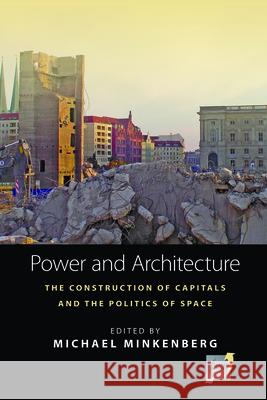Power and Architecture: The Construction of Capitals and the Politics of Space » książka
Power and Architecture: The Construction of Capitals and the Politics of Space
ISBN-13: 9781782380092 / Angielski / Twarda / 2014 / 320 str.
Power and Architecture: The Construction of Capitals and the Politics of Space
ISBN-13: 9781782380092 / Angielski / Twarda / 2014 / 320 str.
(netto: 482,14 VAT: 5%)
Najniższa cena z 30 dni: 498,70
ok. 30 dni roboczych
Bez gwarancji dostawy przed świętami
Darmowa dostawa!
Capital cities have been the seat of political power and central stage for their state's political conflicts and rituals throughout the ages. In the modern era, they provide symbols for and confer meaning to the state, thereby contributing to the "invention" of the nation. Capitals capture the imagination of natives, visitors and outsiders alike, yet also express the outcomes of power struggles within the political systems in which they operate. This volume addresses the reciprocal relationships between identity, regime formation, urban planning, and public architecture in the Western world. It examines the role of urban design and architecture in expressing (or hiding) ideological beliefs and political agenda. Case studies include "old" capitals such as Rome, Vienna, Berlin and Warsaw; "new" ones such as Washington DC, Ottawa, Canberra, Ankara, Bonn, and Brasilia; and the "European" capital Brussels. Each case reflects the authors' different disciplinary backgrounds in architecture, history, political science, and urban studies, demonstrating the value of an interdisciplinary approach to studying cities. Michael Minkenberg is Professor of Comparative Politics at the European University Viadrina in Frankfurt (Oder). From 2007-2010, he held the Max Weber Chair for German and European Studies at NYU. He has also taught at the Universities of Gottingen and Heidelberg, and at Cornell and Columbia Universities. Minkenberg is author of The Radical Right in Europe. An Overview (2008) and co-editor of Turkish Membership in the European Union - the Role of Religion, a special issue of Comparative European Politics (2012).
Capital cities have been the seat of political power and central stage for their states political conflicts and rituals throughout the ages. In the modern era, they provide symbols for and confer meaning to the state, thereby contributing to the "invention" of the nation. Capitals capture the imagination of natives, visitors and outsiders alike, yet also express the outcomes of power struggles within the political systems in which they operate. This volume addresses the reciprocal relationships between identity, regime formation, urban planning, and public architecture in the Western world. It examines the role of urban design and architecture in expressing (or hiding) ideological beliefs and political agenda. Case studies include "old" capitals such as Rome, Vienna, Berlin and Warsaw; "new" ones such as Washington DC, Ottawa, Canberra, Ankara, Bonn, and Brasília; and the "European" capital Brussels. Each case reflects the authors different disciplinary backgrounds in architecture, history, political science, and urban studies, demonstrating the value of an interdisciplinary approach to studying cities.Michael Minkenberg is Professor of Comparative Politics at the European University Viadrina in Frankfurt (Oder). From 2007-2010, he held the Max Weber Chair for German and European Studies at NYU. He has also taught at the Universities of Göttingen and Heidelberg, and at Cornell and Columbia Universities. Minkenberg is author of The Radical Right in Europe. An Overview (2008) and co-editor of Turkish Membership in the European Union - the Role of Religion, a special issue of Comparative European Politics (2012).











